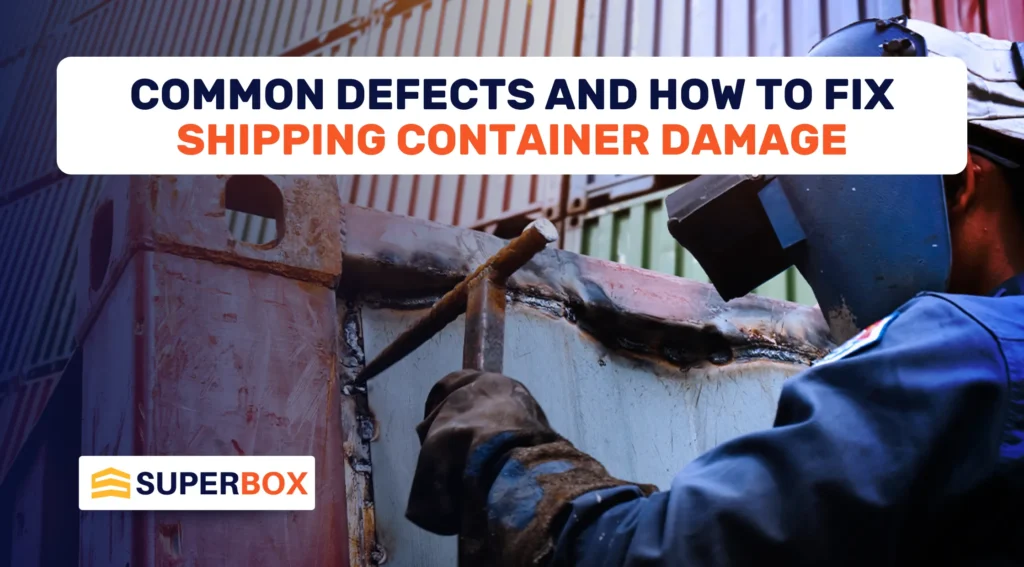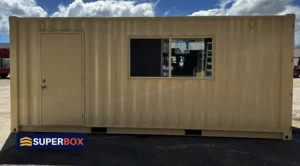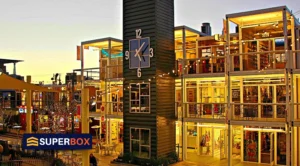Shipping containers are the backbone of the global supply chain, used to transport goods across the world by land, sea, and air. Though built to endure harsh conditions, they are not immune to wear and tear. Whether it’s shipping companies moving cargo across oceans or shipping lines operating along the West Coast, containers face constant exposure to potential damage. Let’s dive into the most common shipping container issues and how they can be addressed.
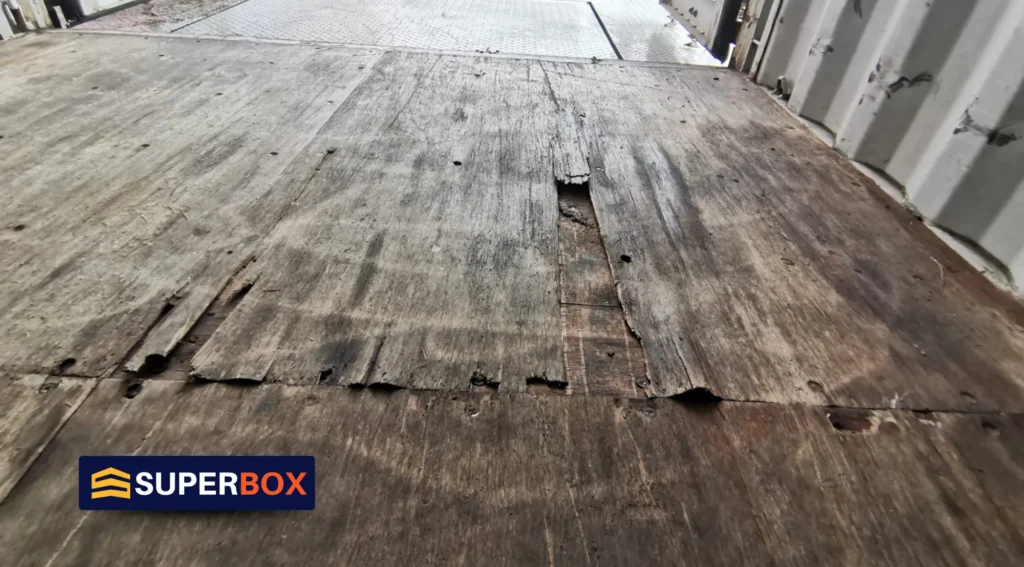
Floor Damage: Types of Floor Damage in Shipping Containers and How to Address Them
The floors of shipping containers are constructed from materials like marine-grade plywood or steel, designed to withstand the repeated loading and unloading of heavy cargo. However, due to the wear and tear experienced over time, even the sturdiest floors can suffer from damage, compromising the structural integrity of the container.
- Rot and Decay: Wooden floors, while durable, can rot when exposed to moisture, a common occurrence when containers face bad weather during transport. Rain, seawater, or condensation can cause the wood to break down over time.
- Solution: To prevent structural damage, replace the decayed sections of the floor with new marine-grade plywood. Regularly applying wood preservatives can help combat the effects of moisture. If damage to the cargo has already occurred due to rot, consider checking the cargo regularly for early signs of floor issues.
- Warping: Warping is another common floor issue, often caused by overloading or uneven distribution of weight during transit. Containers used in the shipping industry face immense pressure as goods are loaded and unloaded in different conditions.
- Solution: If warping occurs, replace warped boards promptly. Steel floors can also warp due to heavy impacts or supply chain disruptions, requiring welding to repair dents or buckling.
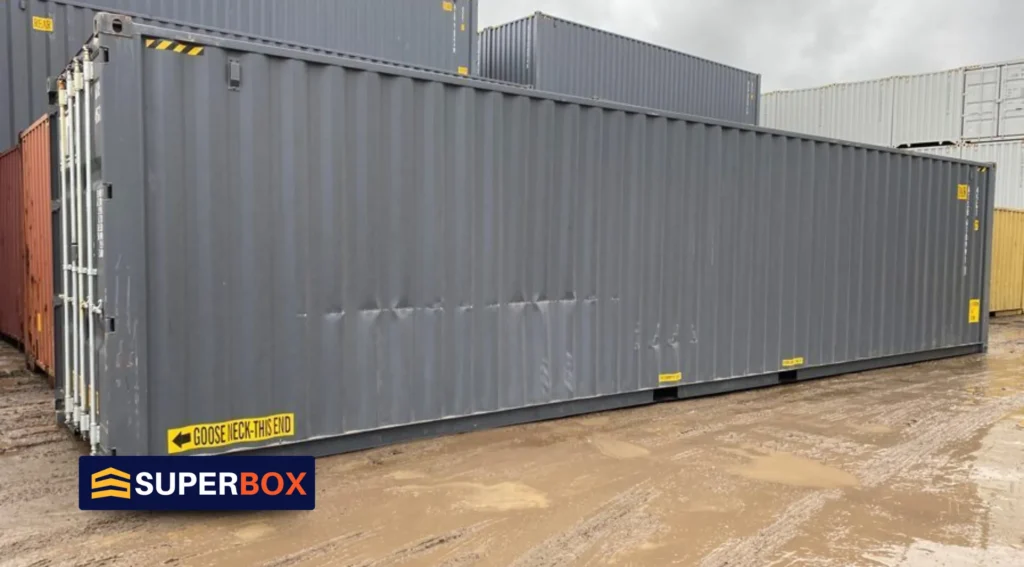
Wall and Roof Damage: Common Issues with Container Walls and Roofs
Walls and roofs of shipping containers are exposed to a range of external factors, from natural disasters to everyday impacts during handling. The following are some of the most frequent types of structural damage found in the global trade environment.
- Dents and Scratches: Containers often get jostled around, leading to dents and scratches on the exterior. While minor, these can eventually lead to structural damage, especially if they cause cracks or punctures.
- Solution: Minor dents can be repaired with heat or suction tools. For larger dents, especially those that could compromise the container’s structure, welding or patching may be necessary. This is especially important if the container is subjected to bad weather, which could cause leaks.
- Leaks: When weather conditions worsen, particularly in regions prone to rain or storms, the roof of a shipping container can rust or develop holes, leading to potential water entry. Water inside a container poses a serious risk of cargo damage.
- Solution: Inspect the roof regularly for rust, especially in containers that frequently travel through coastal regions or experience natural disasters. Patching and applying rust-resistant coatings can help prevent leaks. It’s critical to address any leaks promptly to avoid financial losses resulting from water-damaged goods.
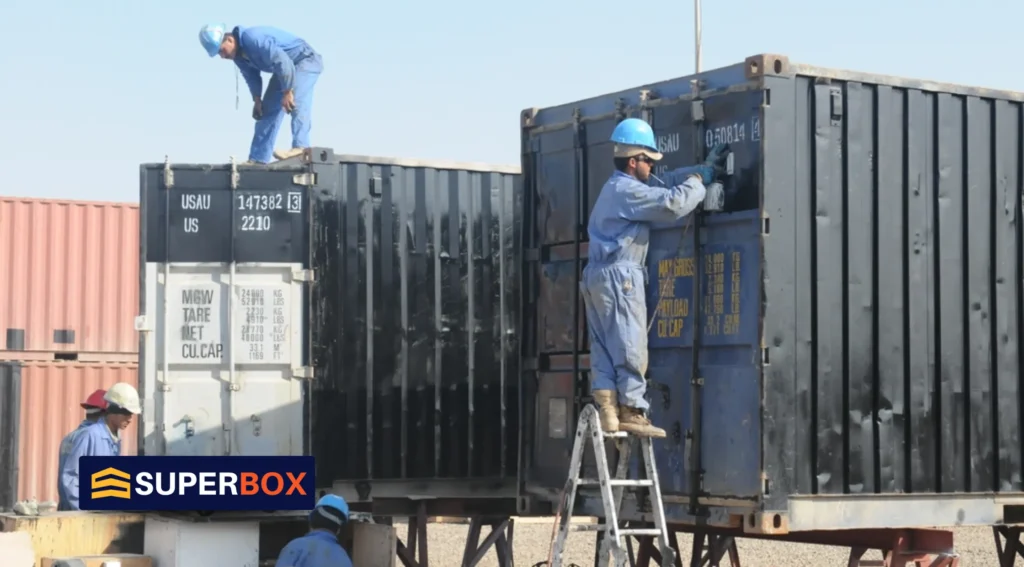
Door and Hatch Problems: Troubleshooting Issues with Container Doors and Hatches
Shipping container doors play an essential role in securing cargo, but issues such as rust, misalignment, and broken locks can occur due to human error or general wear and tear.
- Stiff or Jammed Doors: Exposure to moisture, dirt, and weather conditions like freezing temperatures can cause doors to become stiff or jammed. This can be especially problematic for shipping containers used by shipping companies that require smooth loading and unloading.
- Solution: Regularly lubricate the door hinges and clean them of debris. In severe cases where structural integrity is compromised, the hinges or the entire door may need to be replaced.
- Broken Locks or Seals: A container’s security is only as good as its locks and seals. Broken locks can lead to theft or water damage, while faulty seals may allow air or water to enter the container, leading to cargo damage.
- Solution: Inspect locks and seals frequently, especially in regions prone to bad weather or natural disasters. Promptly replace damaged parts to maintain security and prevent potential damages.
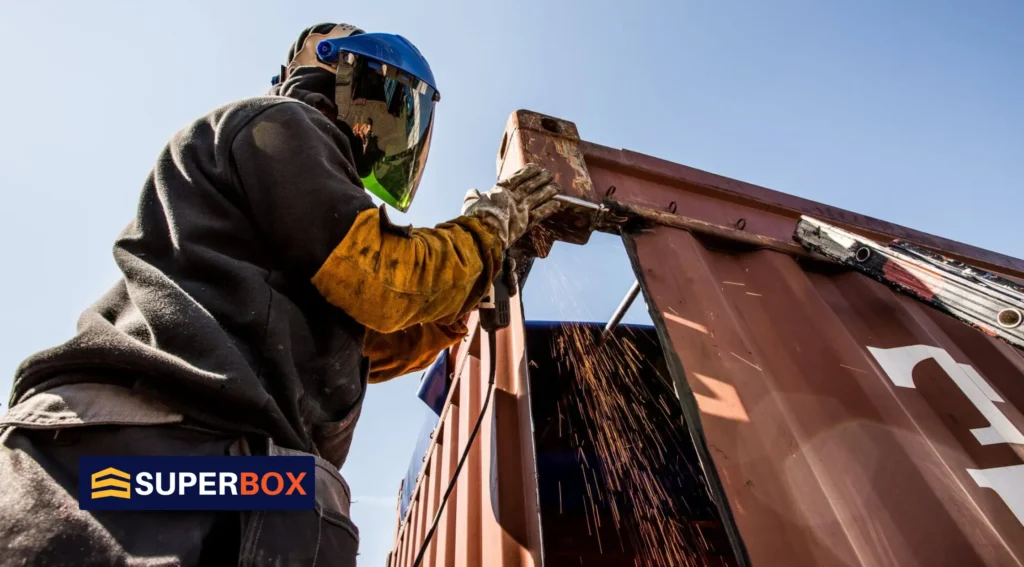
Structural Defects: Identifying and Addressing Structural Defects
While containers are built to last, structural defects can develop over time, especially in containers that are frequently exposed to heavy loads, rough handling, or supply chain disruptions.
- Twist and Racking: One of the most serious structural issues a container can face is twisting, also known as “racking.” This occurs when a container becomes uneven or bent due to improper stacking or overloading. Shipping lines that operate in turbulent waters or face bad weather are particularly prone to this issue, which may also occur during accidents or human error during stacking.
- Solution: To fix a racked container, you may need professional repair. In some cases, steel reinforcements can restore the container’s shape.
However, the container should always be inspected after repairs to ensure it maintains its structural integrity and is safe for continued use.
- Cracked Welds: Over time, the welds that hold a shipping container together can weaken or crack, especially in high-stress areas like the corners or seams. Supply chain disruptions such as rough handling can contribute to these cracks, which weaken the container’s overall structure.
- Solution: Inspect welds regularly, especially if the container frequently experiences heavy loads or bad weather conditions. Any cracks should be welded by a professional to prevent further damage and ensure the container remains safe for use.
Impact of Environmental Factors and Human Error
It’s important to remember that weather conditions and human error can both lead to container damage. For example, containers traveling along the west coast of the U.S. might experience high humidity and rain, while those moving through high-traffic ports might suffer from rough handling. Bad weather can lead to natural disasters such as hurricanes, which can result in financial losses if containers are damaged. Global trade relies heavily on the integrity of shipping containers, and any supply chain disruptions can result in costly consequences.
Conclusion
In the shipping industry, containers are designed to be strong and durable, but that doesn’t make them immune to shipping container damage. Issues such as floor rot, warping, dents scratches, roof leaks, jammed doors, and twisted frames can arise over time, especially in containers exposed to weather conditions or improper handling during the loading and unloading process.
By regularly inspecting your container and addressing shipping container damage early, you can avoid costly financial losses and keep your cargo safe. Proper maintenance ensures that your container continues to perform efficiently in the global supply chain, protecting your goods and minimizing the risk of damage to the cargo.
Addressing these structural defects promptly not only extends the life of your shipping container but also helps prevent disruptions in the global trade network. Taking these preventive measures ensures that your container can continue to serve its purpose without compromising its structural integrity or the safety of its cargo.
Looking for reliable shipping containers? SuperBox has you covered!
Say goodbye to shipping issues with SuperBox’s sturdy and dependable containers. Whether your business is big or small, our containers are designed to keep your cargo safe and secure during transit.
Built for durability and quality, SuperBox containers meet the high standards of modern shipping. For stress-free shipping, call us at 1-866-696-9269 to discover how we can provide the right container solution for your needs. Our team is ready to help you ensure your goods are transported safely and efficiently.


